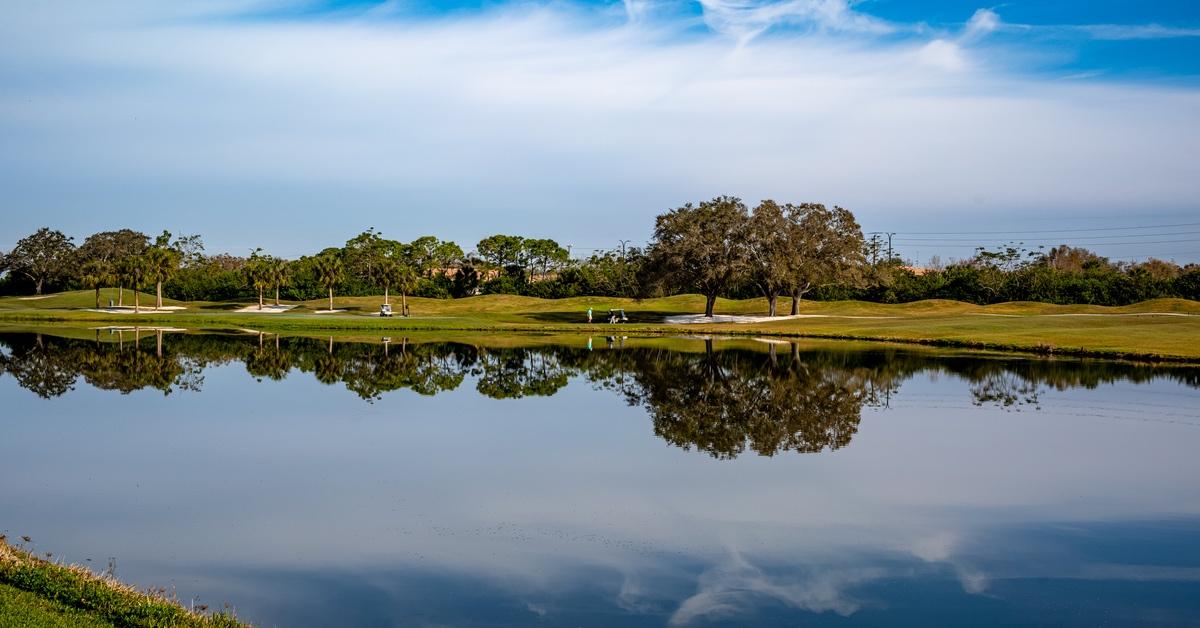The Environmental Impact of a Golf Course Is Sky-High
Although it's regarded by some as an "outdoorsy sport," golf is absolutely terrible for the planet.
Updated July 18 2024, 9:56 a.m. ET

Compared to other sports, golf is generally considered to be an "outdoorsy" game. While giving players the opportunity to get some fresh air for a few hours, courses are often planted in gorgeous natural areas — in the valleys of gorgeous mountains, in scenic deserts, or with breathtaking views of the ocean.
However, they typically do absolutely nothing for the planet. In fact, the environmental impact of golf courses is truly outrageous, from the construction to upkeep and beyond.

How do golf courses impact the environment?
There are many ways in which golf harms the environment. For a golf course to be developed, for example, large amounts of land clearing is required, often resulting in deforestation.
According to the Seattle Journal of Environmental Law, it is relatively common for developers to ravage entire ecosystems in the process. In the process of clearing all of this land, heavy machinery emits large amounts of greenhouse gases. Nearby waterways can also be affected.
Not to mention, as of 2018, the Daily Mail reported that over 2 million acres of the United States are designated to golf courses — that's 2 million acres of natural land that would otherwise be natural habitats.

In addition to harming native habitats, large amounts of water and pesticides are required for the grass to stay green, and to keep pests away.
With many golf courses located in drought-ridden areas such as Arizona and California, using water recklessly to maintain the grass, instead of giving it to communities or leaving it for plants and animals, is irresponsible. In Utah, too, according to CNN, Salt Lake County's 30 golf courses consume about 9 million gallons of water daily in arid Utah.
According to CBC, the pesticides used to keep the grass pest-free affect plants, animals, and nearby waterways.
"Over 50 pesticides are commonly used in the industry although the number typically used on any one course is much lower, ranging from four to 12 per year, depending on the location," reads an article titled The Real ‘Greening’ of The Golf Course from CBC. "When golf turf is mowed to low heights, the grass is stressed and more vulnerable to pests, which requires more pesticide use."

How are golf courses trying to improve?
Groups such as Audubon International recognize that people aren't going to stop playing golf altogether, so it's taking strides to preserve the game and the environment. Through education and environmental programs, the Audubon Cooperative Sanctuary Program (ACSP) for Golf Courses is working to protect and conserve water for surrounding bodies of water, support ecosystems, and protect the surrounding plants and animals. The organization is also looking to provide wildlife sanctuaries and more.
The Audubon Society also launched a program called Monarchs in the Rough. Since its beginnings, its helped hundreds of golf courses provide habitats for endangered monarch butterflies. To do so, it creates monarch butterfly habitats in out-of-play spots throughout U.S. golf courses, allowing for them to pollinate and take shelter when necessary.
That isn't to say, though, that golf courses should continue to be developed. Although existing golf courses should take every step they possibly can to lower their impact and give back to nature, we should work to preserve habitats that were there first.
This article, originally published on Dec. 10, 2021, has been updated.